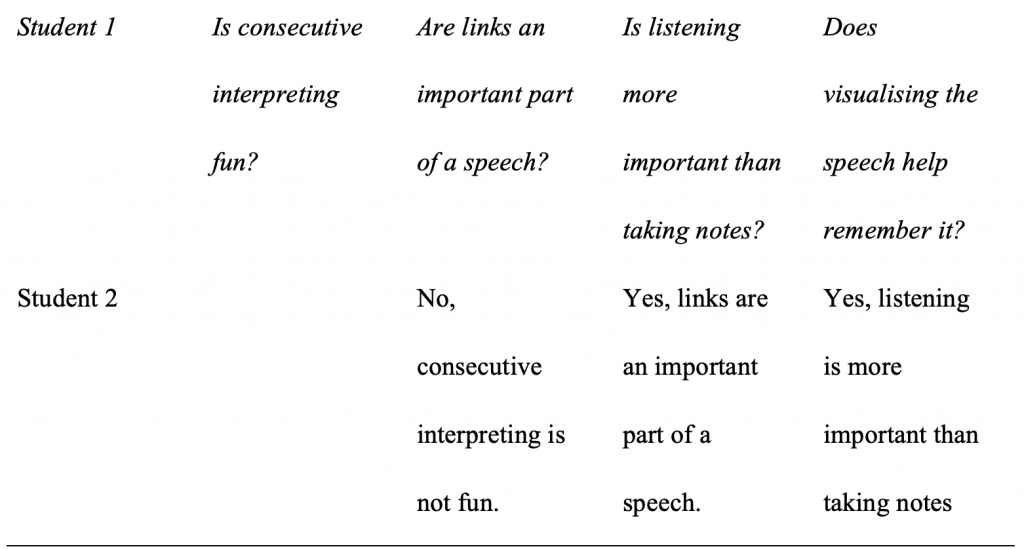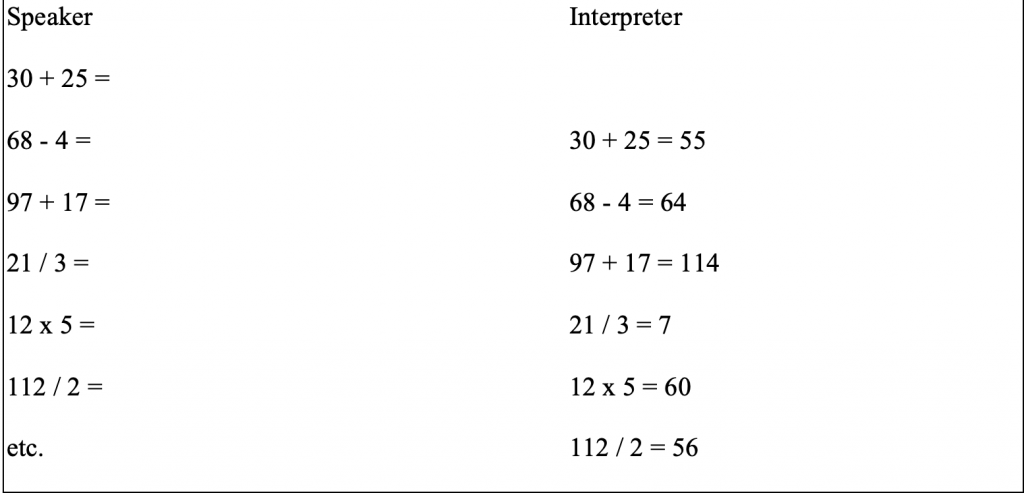These exercises are taken from the 2nd edition (2024) of Andy Gillies’ Conference Interpreting – a student’s practice book
D.19 Two questions at a time 1
Aim: to listen and do something else without missing any of what you’re listening to.
You will need: a list of simple questions.
Designate two people, one to ask and one to answer questions. The Asker prepares a list of 5–10 questions. These can be general or personal to start with; later you can create a list of questions on a single technical area, for example one that you’re preparing for class.
Once the questions have been prepared the Asker asks a question. The Answerer must answer it as a full sentence, not just Yes/No. While they are answering the first question a second question is asked, to which the Answerer will answer while a third is asked etc. Initially the question and answer can be in the same language, later in a different language.
Example

D.22 Interpreting sums
Aim: to promote thinking and listening at the same time
You will need: a list of simple mathematical problems.
Read out a simple mathematical problem (one that can be solved by mental arithmatic) but do not read out the answer. The interpreter must do the maths required to come up with the answer and then speak the problem again, adding the answer. Before they finish speaking the speaker starts with a new problem.
This exercise can be done A language to A language, then B/C language to A language, then A language to B language to increase the degree of difficulty. You can of course also vary the difficulty and variety of the maths problems to make things progressively more difficult.
The exercise shows very clearly that it is not listening and speaking at the same time that is difficult, but listening and thinking (here, working out the answer).
Example 1
